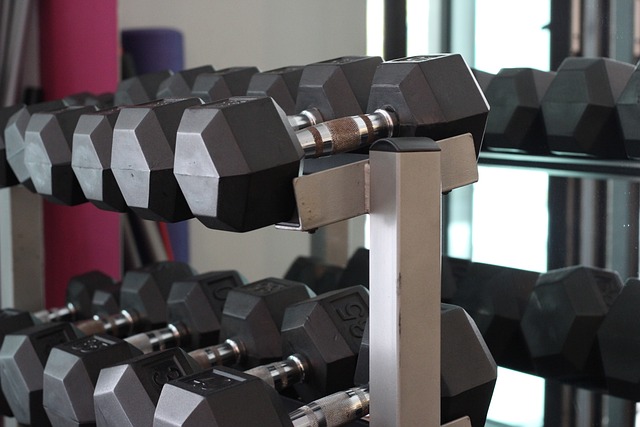When it comes to fitness and athletic performance, understanding the science behind muscle fibers can make a significant difference in how you train. Not all muscles are created equal—our bodies contain different types of muscle fibers, each with unique characteristics that influence strength, endurance, and overall performance. By tailoring your workouts to target these specific fiber types, you can maximize your results, whether your goal is building muscle, improving endurance, or enhancing explosive power.
What Are Muscle Fibers?
Muscle fibers are the individual cells within skeletal muscles that contract to produce movement. These fibers vary in structure and function, allowing them to specialize in different types of physical activity. Broadly speaking, there are two main categories of muscle fibers: slow-twitch (Type I) and fast-twitch (Type II) . Each type plays a distinct role in how our muscles respond to exercise.
Types of Muscle Fibers
- Slow-Twitch Fibers (Type I):
- Characteristics: Also known as oxidative fibers, slow-twitch fibers are highly efficient at using oxygen to generate energy for sustained, low-intensity activities. They contain more mitochondria (the “powerhouses” of cells) and myoglobin, a protein that stores oxygen.
- Function: These fibers are built for endurance and resistance to fatigue. They are the primary drivers in activities like long-distance running, cycling, swimming, and other aerobic exercises.
- Appearance: Slow-twitch fibers are smaller in size and have a rich blood supply, giving them a reddish hue.
- Training Focus: To develop Type I fibers, focus on prolonged, steady-state cardio and high-repetition strength training with lighter weights.
- Fast-Twitch Fibers (Type II):
Fast-twitch fibers are further divided into two subtypes:- Type IIa (Intermediate Fast-Twitch):
- Characteristics: These fibers combine elements of both slow- and fast-twitch fibers. They can generate energy anaerobically (without oxygen) but also have some aerobic capacity.
- Function: Type IIa fibers are recruited during moderate-intensity activities that require both strength and endurance, such as middle-distance running or circuit training.
- Training Focus: Interval training, moderate-weight resistance exercises, and moderate-duration cardio are ideal for developing these fibers.
- Type IIx (Pure Fast-Twitch):
- Characteristics: These fibers are designed for short bursts of intense power and strength. They rely heavily on anaerobic metabolism and fatigue quickly.
- Function: Type IIx fibers are activated during explosive movements like sprinting, heavy lifting, and jumping.
- Appearance: Larger in size than slow-twitch fibers, they contribute significantly to muscle hypertrophy (growth).
- Training Focus: High-intensity, short-duration exercises like sprinting, plyometrics, and heavy weightlifting are best for targeting Type IIx fibers.
- Type IIa (Intermediate Fast-Twitch):
How Muscle Fibers Impact Performance
The proportion of slow-twitch to fast-twitch fibers in your body is largely determined by genetics, but training can influence their development. Athletes often excel in specific sports based on their dominant fiber type:
- Endurance Athletes: Long-distance runners, cyclists, and swimmers tend to have a higher percentage of slow-twitch fibers, enabling them to sustain activity for extended periods.
- Power Athletes: Sprinters, weightlifters, and football players typically have more fast-twitch fibers, which allow them to generate explosive force.
- Hybrid Athletes: Sports like soccer, basketball, and rowing require a balance of both fiber types, making versatility key.
Understanding your natural predisposition can help you choose activities that align with your strengths while identifying areas for improvement through targeted training.
Tailoring Your Workouts to Muscle Fiber Types
To optimize your training, consider incorporating exercises that target both slow-twitch and fast-twitch fibers. Here’s how:
1. For Endurance (Slow-Twitch Fibers):
- Cardiovascular Training: Engage in steady-state cardio activities like jogging, cycling, or swimming for 30-60 minutes at a moderate intensity.
- Strength Training: Use lighter weights (40-60% of your one-rep max) and perform higher repetitions (15-20 reps per set). Focus on maintaining proper form and tempo.
- Example Exercises: Walking lunges, bodyweight squats, and resistance band exercises.
2. For Strength and Power (Fast-Twitch Fibers):
- Explosive Movements: Incorporate plyometric exercises like box jumps, sprints, and medicine ball throws to activate Type IIx fibers.
- Heavy Lifting: Perform compound lifts like deadlifts, squats, and bench presses with heavier weights (70-90% of your one-rep max) and lower repetitions (3-8 reps per set).
- Rest Periods: Allow adequate recovery time (2-5 minutes) between sets to ensure maximum effort during each lift.
- Example Exercises: Olympic lifts, kettlebell swings, and hill sprints.
3. For Balanced Development (Both Fiber Types):
- Interval Training: Alternate between high-intensity bursts and low-intensity recovery periods (e.g., sprinting for 30 seconds followed by walking for 1 minute).
- Circuit Training: Combine strength and cardio exercises in a single session to challenge both fiber types simultaneously.
- Example Workouts: Tabata routines, AMRAP (as many rounds as possible) circuits, and HIIT (high-intensity interval training).
Adaptability of Muscle Fibers
While genetics play a role in determining your muscle fiber composition, research shows that fibers can adapt to training stimuli. For example:
- Endurance training can increase the aerobic capacity of fast-twitch fibers, making them behave more like slow-twitch fibers.
- Strength training can enhance the size and power output of slow-twitch fibers, improving their contribution to force production.
This adaptability means that even if you’re not naturally predisposed to excel in a particular area, consistent and targeted training can still yield significant improvements.
Common Misconceptions About Muscle Fibers
- “You Can Only Train One Fiber Type at a Time”:
While certain exercises emphasize specific fiber types, most activities recruit a combination of fibers. For instance, running a marathon primarily engages slow-twitch fibers, but fast-twitch fibers are still involved during uphill climbs or final sprints. - “You’re Stuck with What You’re Born With”:
Although genetics influence fiber distribution, training can modify fiber behavior and improve overall performance. - “Lifting Heavy Weights Always Builds Muscle Mass”:
While heavy lifting targets fast-twitch fibers, which contribute to hypertrophy, muscle growth depends on factors like volume, nutrition, and recovery—not just weight.

Leave a Reply